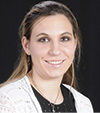To increase the odds of calving during daylight hours, the recommendation has been to feed the herd at night. As more of the beef industry invests in more research, there is strong evidence this technique may be based on some hard science.
Some cattlemen have been using what’s called the “Konefal method” since the 1970s. The term comes from the method’s creator, a Canadian rancher named Gus Konefal. He used an early feeding between 11 a.m. and noon and then a later second feeding between 9:30 and 10 p.m. As a result, the majority of his herd would calve during the day every year. The method has been deemed a tried-and-true one by generations of cattlemen ever since.
“There are multiple advantages to programming cows to calve during the day,” says Adele Harty, extension cow-calf specialist at South Dakota State University. “These include warmer temperatures and sunlight, which help get calves warmed up, dried off, standing and nursing quicker.”
Additionally, daytime can help increase calf survival rate by making it easier to find weak calves and assist with difficult births. And from another practical standpoint, calving during the waking hours involves less stress and labor.
Anecdotal or scientific?
This phenomenon has been of interest to different universities and has been the subject of several research studies. It is no longer just a piece of ranching lore only cattlemen abide by. The results have been strongly in favor to support the late feeding, with a high rate of repeatability among diverse groups.
These findings seem to be pretty uniform across cattle breeds and herds. Mary Drewnoski, beef specialist at the University of Iowa, notes young cows on this feeding program should get some special attention.
“If I were to focus on a group, I would feed my heifers and young cows in the evening, as these are the ones I want to be able to watch most closely,” she said. “Also, heifers that calve during the day are more likely to calving during the day in subsequent years. So you may be helping to set yourself up for more daytime calving in the future.”
Harty pointed to a Kansas State University five-year study where cattle were fed between 4 and 6 p.m. “An interesting find from their study was: Cows calved within three hours of the time the previous calf was born,” she said. “If this is the case, and heifers can be programmed to calve during the day the first year they calve, they are more likely to continue calving during the day with a similar feeding schedule.”
Other studies have had similar results. In a Canadian study on a herd of Herefords, only 40 percent of the animals fed at 8 a.m. and 3 p.m. calved during the day. Animals fed just three hours later saw a nearly 80 percent daytime calving rate.
One of the most widely accredited studies on this subject took place in Iowa. Its compelling evidence was observed from 1,331 cows on 15 different operations. Eighty-five percent of the entire calf crop was delivered between the hours of 6 a.m. and 6 p.m.
Another study in Great Britain studied 162 animals on four different farms. It found similar results, with 57 percent of calves being born during the day when cows were fed only once at 9 a.m.; that jumped to 79 percent when cows were fed at 10 p.m.
Despite science’s best attempts, the “why” mechanism that feeding has on calving is still relatively unknown. “My thoughts are that it has to do with the heat of fermentation,” says Harty. “There are others who consider this a possibility, but as a mechanism, it is still not entirely understood.”
Some have suggested the post-feeding hormonal effect may play a role. Another theory is: Rumen motility, the frequency of rumen contractions during digestion, is known to decrease shortly before a cow calves. As the pressure falls as the time of calving approaches, so does rumen motility. There is a possibility that time of feeding has an effect on intraruminal pressure and subsequently rumen motility. More research is necessary to understand specifically what this impact is and how it works with the cow’s biology.
Implementing the method
Despite there being some unanswered questions, there is enough science to inform conscious cattlemen on how to implement a Konefal feeding routine for the best results. Harty advises beginning such a routine approximately a month in advance to calving in a drylot situation. This will allow cows to properly transition over to a nighttime feeding.
“If ranchers are pasture calving, achieving a complete transition and expected results can be challenging, as cows will be out grazing during the day,” she said. “A partial effect can likely be achieved if the largest portion of their diet is delivered in the evening. Feeding should occur as late as possible, so having multiple pens may be an easier alternative to manage.”
She explains that this way, feed can be put in one pen during the day while the cattle are put in another pen away from feed. Then feeding the herd can be just as easy as opening a gate to allow them access.
Drewnoski adds, “It works best if they are not grazing or have access to feed during the rest of the day. Ideally, they eat all their feed between time of feeding and midnight. This is most likely to result in daytime calving.” ![]()
PHOTO: Beginning a routine a month before calving could usher in more patterns for daytime feeding, followed by nighttime feeding, leading to daytime calving. Staff photo.
Jaclyn Krymowski is a freelance writer based in Ohio.







